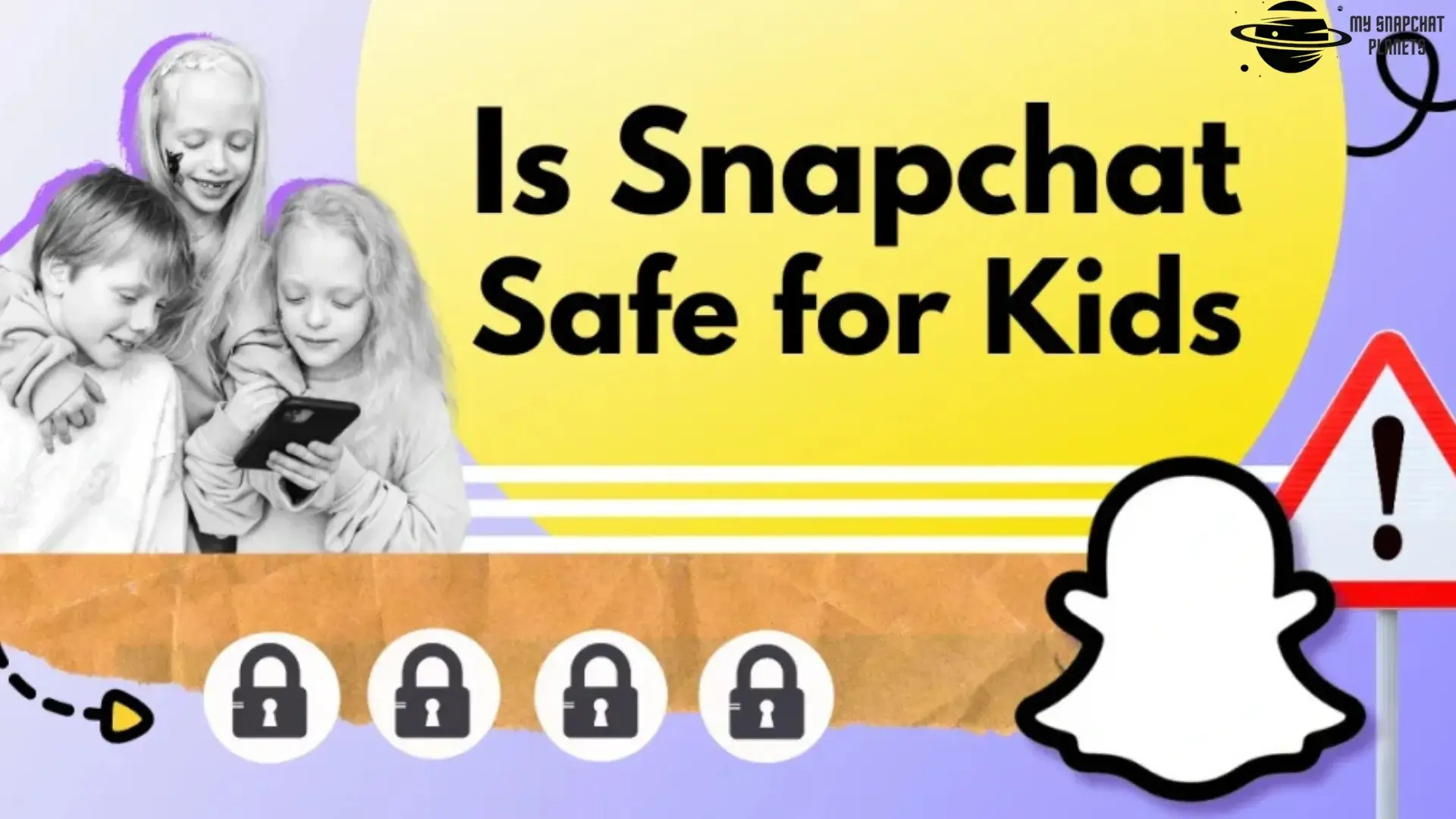What Is Snapchat, How Does It Work, and Is It Safe for Kids?

With kids spending a lot of time online, it’s natural for parents to worry about how safe apps like Snapchat are. Snapchat is an app where users can send temporary photos and videos to each other, but since the messages disappear, it can sometimes lead to risky behavior. In this article, we’ll explain what Snapchat is, how it works, and if it’s safe for children. We’ll also look at the app’s safety features, parental controls, and give you some tips to help keep your child safe online.
What is Snapchat?
Snapchat is a popular messaging app that allow users send messages, videos, and pictures (called “snaps”) that disappear after being seen. This temporary nature can make communication feel safer and more personal, especially for younger people. Snapchat also has fun features like filters, lenses, and voice and video calls. It also has a Snap Map, which shows users’ real-time locations so they can see where their friends are. Snapchat planets system is an other feature that attracts users.
Since Snapchat keeps adding new features, it also brings new risks. In this guide, we’ll explain these features, their potential dangers, and how parents can use safety tools to keep their kids safe.
How Does Snapchat Work?
Snapchat’s primary function is sending temporary photos and videos, called “snaps,” to friends. After a snap is viewed, it disappears from both the recipient’s phone and Snapchat’s servers. To create a snap, users press the shutter button to take a picture or hold it down to record a video. Afterwards, users can customize their snaps by adding filters, text, drawings, or stickers before sending them.
Here’s a breakdown of key features:
- Snaps: Photos or videos sent to friends that disappear after being viewed. Senders set a timer for how long the snap will be visible (1-10 seconds), or they can opt for an “infinite” timer. However, recipients can screenshot snaps, and Snapchat notifies the sender if this happens.
- Stories: A collection of snaps that lasts 24 hours, visible to all a user’s friends.
- Chat: Direct messaging between users, including text, video calls, and voice messages.
Although snaps are designed to disappear, Snapchat does reserve the right to retain metadata about messages, including the date, time, sender, and receiver. Snapchat also keeps some information even though the actual snaps may be deleted from servers.
Is Snapchat Safe for Kids?
Snapchat itself is not inherently unsafe, but like all social media apps, it comes with potential risks. The app’s disappearing messages can encourage secretive behaviour and inappropriate content sharing. Parents need to be aware of these risks and educate their children on how to use Snapchat safely.
Snapchat has introduced parental controls in recent years to help monitor kids’ activity. These controls, especially with updates in 2025, make it easier for parents to oversee teen accounts.
The Pros of Snapchat’s Safety Features
Snapchat has made several improvements to enhance safety:
- Family Center: Parents can link their child’s account to their own to monitor activity.
- Viewing Recent Chats and Contacts: Parents can check who their teens have been talking to and who they’ve recently added.
- Reporting Features: Teens can report inappropriate accounts directly to Snapchat’s Trust and Safety team.
- Content Restrictions: Snapchat restricts certain content in “Stories” and “Spotlight,” ensuring age-appropriate content.
- In-App Warnings: Snapchat warns teens if someone without mutual friends attempts to add them.
The Cons of Snapchat’s Safety Features
Despite the safety features, there are still areas of concern:
- Limited Monitoring: Parents can’t see the content of chats; they can only see who their child is talking to.
- Privacy Gaps: Contacts are hidden seven days after being added, making it harder for parents to track new interactions.
- Secondary Accounts: Teens may create secondary accounts to circumvent restrictions.
- Anonymity: Snapchat uses usernames rather than real names, which can make it difficult to track user identities.
Snapchat’s disappearing nature, combined with these gaps in monitoring, can expose children to risks like cyberbullying, inappropriate content, and even predation.
How Old Do You Have to Be to Get Snapchat?
Snapchat’s official age requirement is 13 years old. However, many users, especially those younger than 13, often lie about their age to bypass the app’s age restrictions. If a child is under 13, it’s not recommended for them to use Snapchat due to the risks associated with the app’s features and its lenient age verification process.
Although Snapchat is designed for users 13 and older, parents should carefully assess their children’s maturity before allowing them to use the platform, as the app exposes users to various risks.
How Can Parents Monitor Snapchat?
Snapchat offers a Family Center that allows parents to monitor their child’s activity while maintaining privacy. Here are some steps parents can take to ensure their child’s safety:
- Link Accounts: Parents can link their phone to their child’s account in the Family Center.
- Check Recent Chats: Parents can review recent chats, contacts, and group members, helping them stay informed about who their child is communicating with.
- Privacy Controls: Parents can adjust settings to block strangers from contacting their child, hide their child’s location, and protect their phone number.
To set up the Family Center:
- Download the latest version of Snapchat.
- Add your teen as a friend (search for their username).
- Open Family Center in Snapchat settings and invite your child to link accounts.
While Family Center allows parents to monitor interactions, it doesn’t provide full access to message content. Parents should be aware of these limitations and have ongoing conversations with their children about the importance of online safety.
How to Be Safer on Snapchat
If you allow your child to use Snapchat, it’s essential to establish some rules for safe usage:
- Real Age: Make sure your child uses their real age when signing up to avoid exposure to inappropriate content.
- Limit Contacts: Vet new contacts carefully and encourage your child to block anyone who seems suspicious.
- Use Privacy Settings: Ensure location sharing is turned off, and restrict who can contact your child.
- Don’t Overshare: Teach your child not to share personal information, including passwords, home addresses, and phone numbers.
Snapchat also provides helpful tools to report inappropriate content and block unwanted interactions.
Conclusion
Snapchat offers a fun and creative way for kids and teens to communicate with friends, but it’s important for parents to be aware of its potential risks. By using the app’s built-in safety features like Family Center, privacy controls, and location settings, parents can better protect their children from cyberbullying, inappropriate content, and online predators.
However, Snapchat’s disappearing messages and open nature still pose challenges, making it essential for parents to have ongoing conversations about online safety. It’s the parents’s personal decision to allow their child to use Snapchat or not, but with the right precautions, kids can enjoy the app responsibly and safely.
